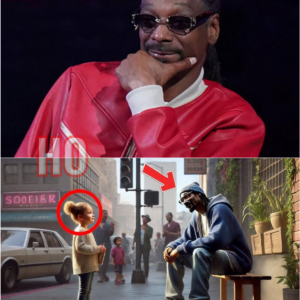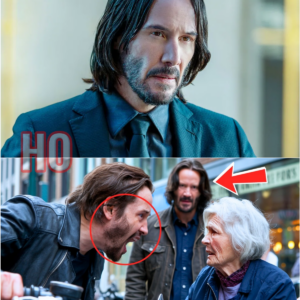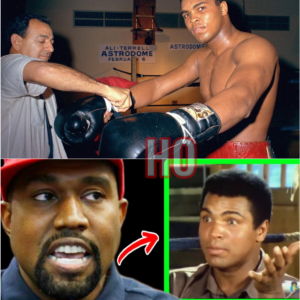ESTO TE OCULTAN DE MICHAEL JACKSON: El Video que no quieren que veas | HO
Michael Jackson fue la estrella de pop más grande del planeta. Caracterizado por muchos actos de bondad y filantropía hacía miles de personas con necesidades y dificultades.
Pero, lejos de la verdad, lo que la gente comenta cuando se nombra al cantante es una seguidilla de mentiras. Mentiras inyectadas por la prensa y los medios que opacaron la verdad y, hasta el día de hoy lo siguen haciendo.

The narrative begins on June 25, 2009, when Dr. Conrad Murray administered 10 mg of Valium to Michael Jackson at 1:30 a.m. This had become a routine to help Jackson manage his severe insomnia, which had been plaguing him during the final days leading up to what was to be a triumphant return to the stage in London. Jackson had delivered a flawless rehearsal the previous day, an event that seemed to exacerbate his inability to sleep.
Half an hour after the initial dose of Valium, Dr. Murray injected another anxiolytic, but it had little effect. As time passed, he continued to administer different medications, each failing to bring Jackson the relief he sought. Every 40 minutes, more drugs entered Jackson’s bloodstream, but none were effective.
By 10:40 a.m., Murray decided to give in to what had become a desperate measure: he administered 25 mg of propofol diluted in lidocaine intravenously. Despite his reservations due to the amount of medication already in Jackson’s system, the doctor proceeded. Shortly after this final injection, Jackson lost consciousness, not just for the sleep he longed for, but permanently.
Michael Jackson’s life was marked by extraordinary success, but also by deep personal struggles and controversies. While he was known for his immense contributions to music, his philanthropy, and his efforts to help those in need, much of the public’s perception of him was tainted by sensationalized media reports and lingering rumors. These narratives overshadowed the truth and continued to do so even after his death.
Jackson’s early life was shaped by his involvement in The Jackson 5, a group formed with his brothers under the strict discipline of their father, Joe Jackson. Michael’s immense talent made him the focal point of the group, but the pressure and harsh treatment from his father left lasting scars. By 1971, Michael began his solo career, a move that would propel him to global superstardom.
As he grew older, Jackson’s fame skyrocketed, and with it came a string of accolades. By 1975, he had already released four solo albums, written impressive lyrics, and perfected his dance moves. However, a failed nose surgery following an accident would mark the beginning of a long and troubled relationship with cosmetic procedures.
Jackson’s fifth album brought him a wave of awards, including American Music Awards, and set the stage for what would be the peak of his career. In 1982, Jackson released “Thriller,” an album that would go on to become the best-selling album of all time, with an estimated 65 million copies sold. The album earned him eight Grammy Awards and eight American Music Awards, including Album of the Year and Record of the Year for “Beat It.”
“Thriller” was not just a musical phenomenon; it revolutionized the music video industry. The iconic 14-minute video, which featured a full narrative and groundbreaking choreography, became a defining moment in pop culture. It was the longest and most expensive music video at the time and introduced a new standard for storytelling in music videos. However, Jackson’s religious beliefs nearly prevented the release of the video, as his faith as a Jehovah’s Witness conflicted with its occult themes. Ultimately, a disclaimer was added to clarify that the video did not reflect Jackson’s personal beliefs.
By 1983, Jackson’s status as a global superstar was cemented with his appearance at the Motown 25th Anniversary Special, where he performed “Billie Jean” and debuted his signature move, the Moonwalk. This performance, watched by 47 million people, became one of the most iconic moments in television history.

Despite his immense success, Jackson’s life was marred by personal tragedies and health issues. During the filming of a Pepsi commercial in 1984, pyrotechnics set his hair on fire, causing second and third-degree burns to his scalp. This incident led to his dependence on painkillers, an addiction that would follow him for the rest of his life.
Jackson continued to break records throughout his career, earning 39 entries in the Guinness World Records, including one for being the most successful entertainer of all time. He received 15 Grammy Awards, including a Grammy Legend Award, 26 American Music Awards, 16 World Music Awards, and sold over 350 million records worldwide. Jackson was also the recipient of the rare Uranium Disc, awarded to artists who have sold over 50 million albums with a single release. He is the only artist with two stars on the Hollywood Walk of Fame, one as a solo artist and another as a member of The Jackson 5.
Michael Jackson’s influence extended beyond music. He was a passionate philanthropist, donating over $300 million to various charities and causes throughout his life. In 1984, he received an award from President Ronald Reagan for his humanitarian efforts. The following year, Jackson co-wrote “We Are the World” with Lionel Richie, a charity single that raised $63 million for famine relief in Africa. Jackson’s philanthropic work earned him numerous awards, including two nominations for the Nobel Peace Prize.
Despite his humanitarian efforts and groundbreaking contributions to music and culture, Jackson’s life was overshadowed by controversy, particularly the allegations of child abuse that emerged in the 1990s. These accusations, coupled with his increasingly reclusive lifestyle and extensive plastic surgeries, fed into the negative media portrayal that haunted him until his death.
Jackson’s later years were marked by financial difficulties and legal battles, but he continued to plan a comeback with his “This Is It” tour, which was to begin in London in July 2009. However, the pressure and his ongoing health issues ultimately led to his tragic and untimely death at the age of 50.
Michael Jackson’s legacy is one of extraordinary talent and innovation, but also of immense personal suffering. His contributions to music, dance, and philanthropy continue to influence artists and inspire millions around the world. Yet, the myths and misconceptions surrounding his life serve as a reminder of the destructive power of fame and the media’s role in shaping public perception. Jackson’s story is a testament to the complexities of living under the spotlight and the toll it can take on even the most gifted individuals.
CONTINUAR VER EN EL VIDEO A CONTINUACIÓN:
News
Elon Musk Invita a Su Ex a Su Boda, pero Ella Llega con un Niño que se Parece Exactamente a Él… – 1
Elon Musk Invita a Su Ex a Su Boda, pero Ella Llega con un Niño que se Parece Exactamente a Él… – 1 Lo que comienza como una gran celebración da un giro inesperado cuando la ex de Elon Musk…
Una Niña Le Pregunta a Snoop Dogg Sobre Dios – Su Respuesta La Hace Llorar | HO
Una Niña Le Pregunta a Snoop Dogg Sobre Dios – Su Respuesta La Hace Llorar | HO Snoop Dogg, una leyenda en el mundo de los ritmos, las rimas y la cultura, es conocido por su estilo relajado, su maestría…
Un Motociclista Arrogante Insultó a una Anciana por Diversión, ¡Sin Saber que Era la Madre de Keanu Reeves! – 1
Un Motociclista Arrogante Insultó a una Anciana por Diversión, ¡Sin Saber que Era la Madre de Keanu Reeves! – 1 Era una tarde soleada en el pequeño pueblo de Milton, un lugar donde raramente ocurría algo emocionante. La mayoría de…
¡RIHANNA SORPRENDE A BEYONCÉ—LAS LÁGRIMAS FLUYEN MIENTRAS SOLANGE INTERVIENE! – 1
¡RIHANNA SORPRENDE A BEYONCÉ—LAS LÁGRIMAS FLUYEN MIENTRAS SOLANGE INTERVIENE! – 1 El mundo de los dramas de celebridades está lleno de giros y vueltas, y cuando se trata de Beyoncé, Rihanna y la familia Carter, no hay excepción. En los…
A los 36 años, Steph Curry FINALMENTE Confirma los Rumores | HO
A los 36 años, Steph Curry FINALMENTE Confirma los Rumores | HO A los 36 años, Steph Curry sigue siendo una de las figuras más prominentes de la NBA. Conocido por su increíble habilidad para el tiro y su liderazgo…
Este viejo clip de Muhammad Ali demuestra que Kanye West tenía razón todo el tiempo – 1
Este viejo clip de Muhammad Ali demuestra que Kanye West tenía razón todo el tiempo – 1 Durante años, Kanye West ha sido etiquetado de “loco” por sus declaraciones controvertidas sobre los esfuerzos sistémicos para reducir la población negra. Pero,…
End of content
No more pages to load











